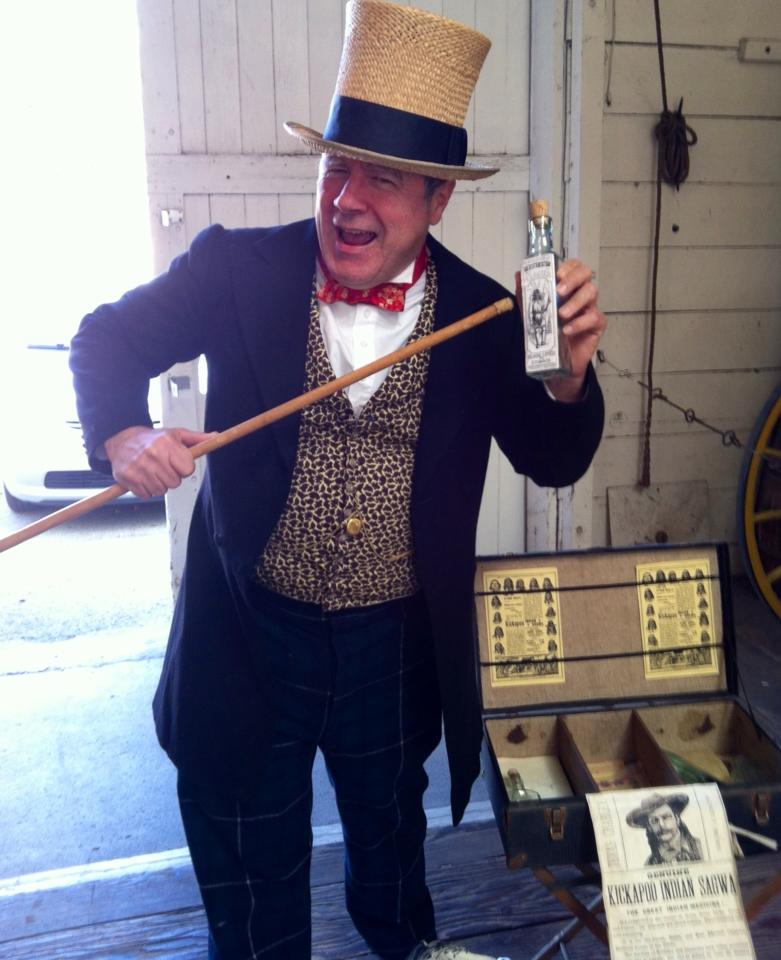
Walter Nelson has, since the 1980s, provided programs. lectures and consultation on a wide variety of historical themes and topics. He has done this for museums, historical societies, arts and community organizations. He has done this on television (the History Channel, A&E, Showtime) and public festivals and low key events in Northern and Southern California, and around the USA as well as in Britain and France.
Some of these programs are presented in costume and character, some just in costume and others, like PowerPoint lectures, in contemporary attire. When a presentation is done in character, at some point, Walter drops character to allow him to present a modern context for the topic. For example, after giving a 19th Century view of the "science" of Phrenology, Walter drops character to discuss its impact on the development of the modern scientific method, its confirmation biases and its use to validate racist attitudes.

In some of these, such as the etiquette presentations, Walter is joined by his wife Sheila. Further, Sheila plays a central role in programs that focus on music, such as programs Walter organized for World War One centennial commemorations for the American Cinematheque and Workman Temple Homestead Museum.
Further, Walter and Sheila often enhance public programs by presenting historical characters in a direct, interactive format. An example of this was a Prohibition centennial program at the Workman Temple Homestead Museum, where Walter portrayed a member of the California Anti-Dry League and Sheila a member of the Women's Christian Temperance Society, and they held debates on the subject of Prohibition. As an aside, Sheila, arguing for Prohibition actually presented stronger, better-reasoned arguments, but when the audience was asked ot vote, they voted in favor of Walter who argued for repeal.
Finally, Walter can organize historical music programs, drawing on his extensive contacts with local musicians who specialize in various periods, as well as coordinate historical theme dances with music, dance instruction, and costume advice.
Examples of this would be the aforementioned World War One programs, 19th Century opera, 18th Century popular songs, and Sea Shanties, as well as a medicine show that combines the "snake oil" salesman program with a program of 19th Century American popular music.
Walter has also organized dances, on behalf of various groups and museums: 19th Century California, Ragtime era, Victorian Ballroom, Roaring '20s and 1930s big band - ranging in size from a couple of dozen dancers to over 800, depending on the event.
A final note: in 2015, Walter and Sheila were engaged for a year as "Artists in Residence" by the Pasadena Museum of History, and in that capacity presented multiple lectures on topics like quack medicine, Edwardian table etiquette, Victorian manners and even a fashion show on the history of women's undergarments.
If you might be interested in having Walter organize something for your organization or museum, contact him via the contact methods on this website.
